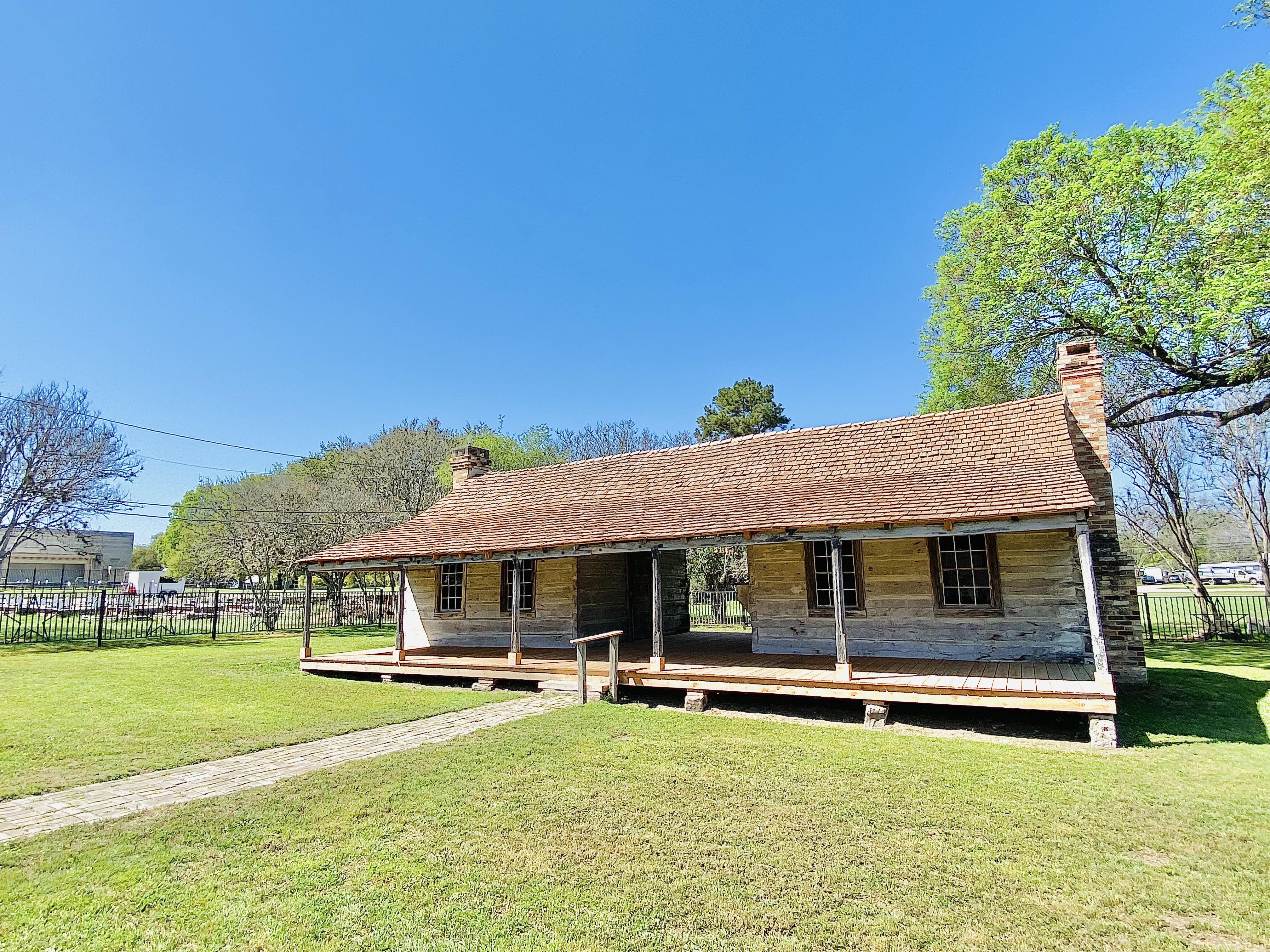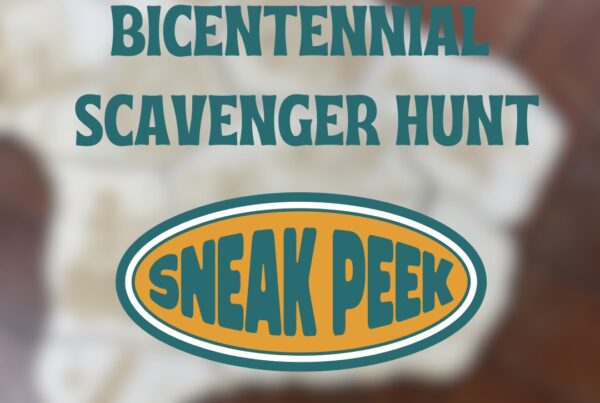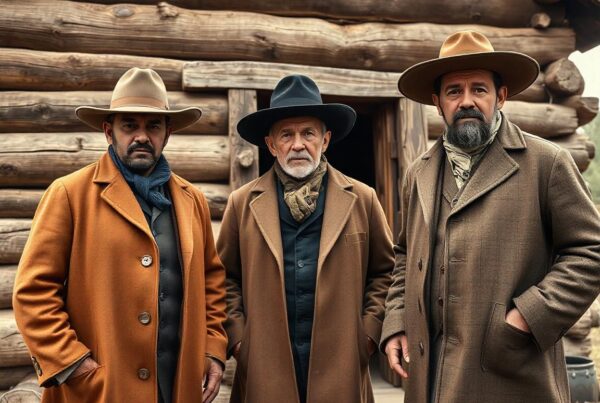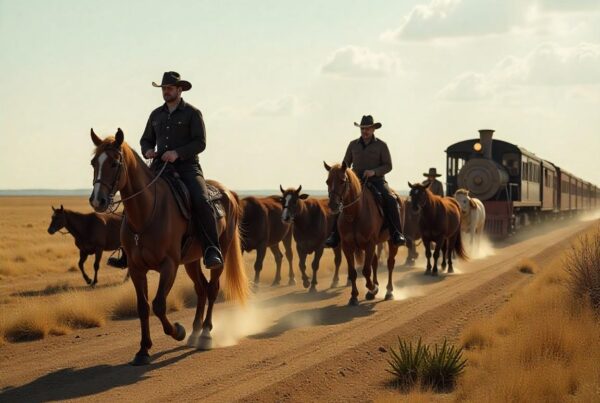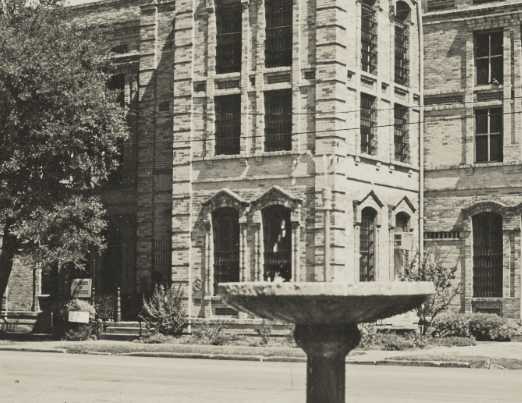The Eggleston House is a free, walk-up and self-guided museum offering a glimpse into early settler life located near Downtown Gonzales. Visitors are encouraged to step onto the porch of the house and activate the speaker box, which provides a description of the building and two illuminated rooms.
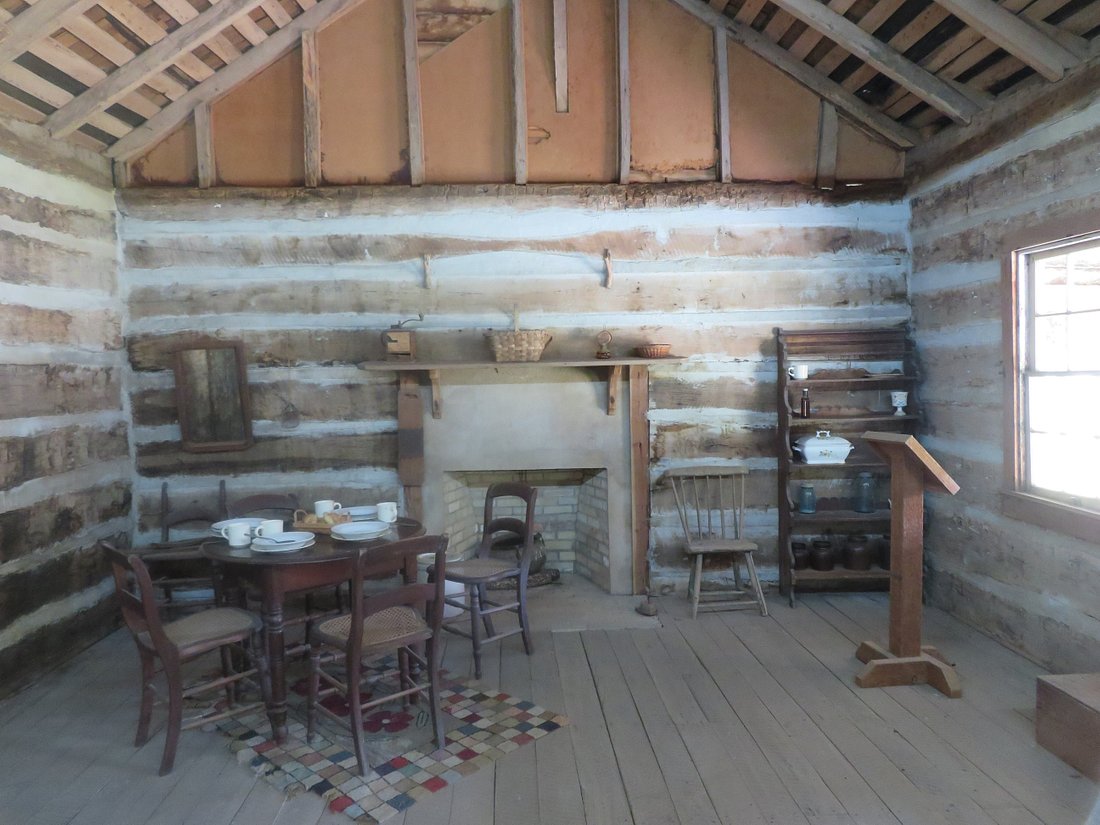
HISTORY
Horace Eggleston, born in Bloomfield, New York, August 22, 1800, was the son of Sidney Horace and Sarah Harwood Eggleston. He married Elizabeth Putnam of New York January 16, 1819, but they later separated. It is not known exactly when he arrived in Texas but he was here well before the revolution. On May 3, 1835, he married Sarah Ann Ponton, sister to Andrew Ponton who was the alcalde of Gonzales during the revolution.
Sarah, born September 16, 1820, in Cooper County, Missouri, was the daughter of William and Isabella Moreland Ponton and came to Texas with her family about 1829. Indians killed her father in 1834 and, in 1840, her brother, Joel, and a friend were attacked by a band of 400 to 1000 Comanches led by Chief Buffalo Hump. With two arrows in his back and spear wounds to his neck Joel was left for dead as the Indians pursued Joel’s friend. Joel managed to crawl into nearby bushes and hide. When the Indians returned with the friend and found Joel gone they tortured the friend and made him call to Joel for help. Joel remained hidden and finally the Indians killed the friend and left. Joel crawled to safety and lived until 1875.
Sarah was only fourteen when she married Horace. He fought at the Battle of San Jacinto and their first child, Amanda, was born May 2, 1836, near the San Jacinto battleground. They had four other children.
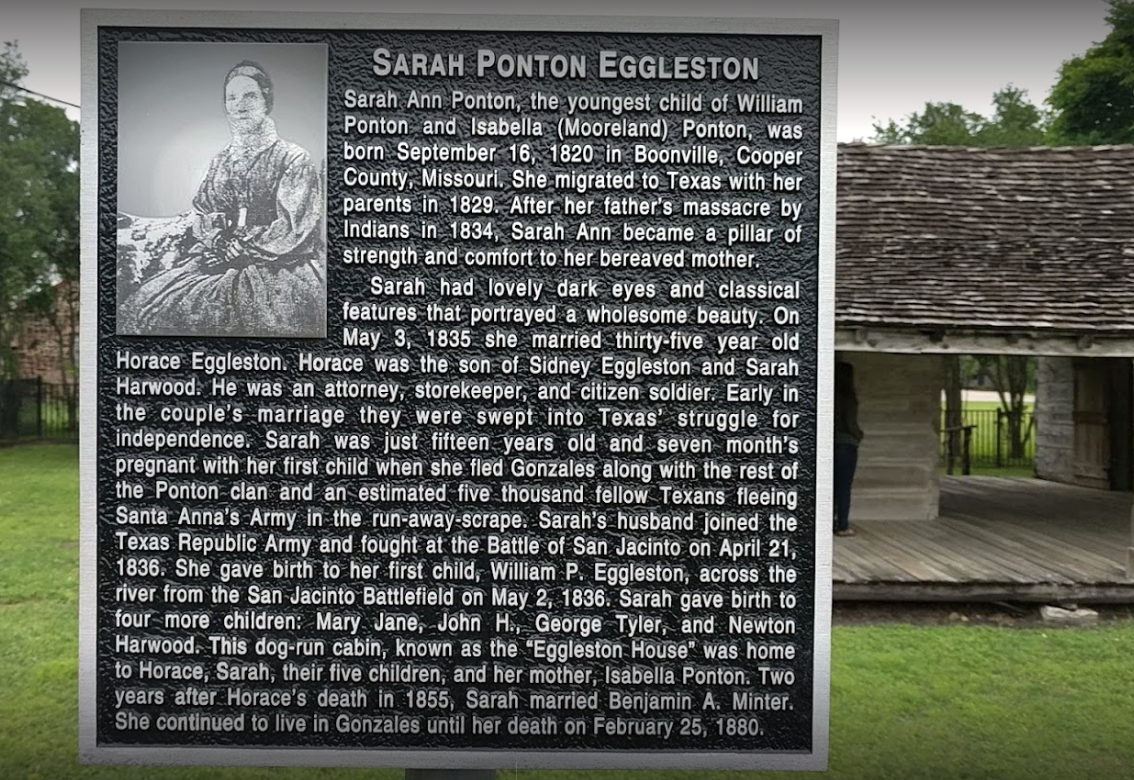
Sometime after the Battle of San Jacinto, Eggleston, a merchant and well-to-do member of Stephen F. Austin’s Colony on the Brazos, chose to make Gonzales his home. In 1845 he purchased lots 1 through 6 in Block 15 near the Guadalupe River on St. Michael Street. With lumber and glass unavailable, he and other homebuilders were hard-pressed for materials. With the help of friends, slave labor and the knowledge of builder Jesse K. Davis, the Eggleston home was built. The design was most common at that time. It was called a “dog-run” or “dog-trot” house. It had two large rooms with a wide-open hall, or “dog-run”, between them. For protection against intruders, there was no outside door. A single door on each side opened onto the “dog run” and sturdy dogs kept watch throughout the night and day. The logs for the home were stood on one end in a pit and whipsawed to square them off. The corners of the house were dovetailed, making them almost airtight. When the logs did not fit perfectly, the cracks were filled with moss and clay. The lumber for the floors and door facings was also whipsawed. The house is the oldest structure in Gonzales and has been moved to the East Avenue Park, preserved in its original state and is open to the public on a limited basis or by appointment.
Horace continued his success as a merchant and community leader. He was on the first board of trustees of the Gonzales College when it opened in 1853. He died March 10, 1855. Sarah married B.F. Minter October 15, 1857. She died February 25, 1880. It is not known where they are buried.
The Eggleston House is the oldest standing structure in Gonzales. The Gonzales Chapter of the Daughters of the Republic of Texas serve as advisors. Furnishings gift of Mrs. Will Steiner.

HISTORICAL MARKER TEXT INSCRIPTION
The Eggleston House was one of the first houses built in Gonzales after the Run-Away Scrape and burning of the town in 1836. Horace Eggleston built this house in 1848 and it was one of the first permanent type in Gonzales. The house was erected on Lots No. 1 to 6 Block 15 of the Inner Town of Gonzales which was 600 feet east of the Guadalupe River and on St. Michael Street. Walnut and oak trees were cut from the banks of the Guadalupe River. From the logs with the use of whipsaws and broadaxes, the timbers were cut to build the house. The whipsaw side of the timber was faced to the outside and the broadaxe side to the inside. The thickness of the timbers furnished protection against the Indians and wild animals. Spaces were left between the timbers from which to fire their weapons. The house was built as it is seen today, with two rooms separated by an open space, which was called a dog-run. Each room was provided a fire place. One room was used for cooking and the serving of food. The other room was used for sleeping quarters. When the family had overnight visitors, which was often, one room would be used for men and the other for women. Dogs were a necessity for protection and hunting, and the dogs slept in the dog-run. In 1954, the house was given to the City of Gonzales by Mr. and Mrs. E. E. Smith, Jr. The city council employed Mr. Fred B. Miesenhelder to move the house to city property. Due to the weight and condition of the house, it was necessary to disassemble all the timbers. Each timber was given a number as it was taken down and then reassembled in reverse order. Those parts which had deteriorated were replaced by new logs cut from the banks of the Guadalupe River.

